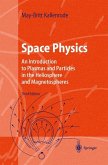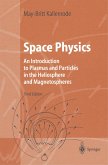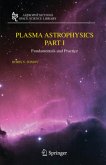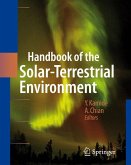This topical volume has been written with the explicit aim to provide a high-level introductory book for a field where there were no elementary textbooks available. It addresses postgraduate students and young scientists investigating space plasma physics or planning to specialize in this field. Experienced researchers will find this book to be a comprehensive source of reference as well as a source of advanced topics for their courses.
The aim of this book is twofold: to provide an introduction for newcomers to state of the art computer simulation techniques in space plasma physics and an overview of current developments. Computer simulation has reached a stage where it can be a highly useful tool for guiding theory and for making predictions of space plasma phenomena, ranging from microscopic to global scales. The various articles are arranged, as much as possible, according to the - derlying simulation technique, starting with the technique that makes the least number of assumptions: a fully kinetic approach which solves the coupled set of Maxwell's equations for the electromagnetic ?eld and the equations of motion for a very large number of charged particles (electrons and ions) in this ?eld. Clearly, this is also the computationally most demanding model. Therefore, even with present day high performance computers, it is the most restrictive in terms of the space and time domain and the range of particle parameters that can be covered by the simulation experiments. It still makes sense, therefore, to also use models, which due to their simp- fying assumptions, seem less realistic, although the e?ect of these assumptions on the outcome of the simulation experiments needs to be carefully assessed.
Hinweis: Dieser Artikel kann nur an eine deutsche Lieferadresse ausgeliefert werden.
The aim of this book is twofold: to provide an introduction for newcomers to state of the art computer simulation techniques in space plasma physics and an overview of current developments. Computer simulation has reached a stage where it can be a highly useful tool for guiding theory and for making predictions of space plasma phenomena, ranging from microscopic to global scales. The various articles are arranged, as much as possible, according to the - derlying simulation technique, starting with the technique that makes the least number of assumptions: a fully kinetic approach which solves the coupled set of Maxwell's equations for the electromagnetic ?eld and the equations of motion for a very large number of charged particles (electrons and ions) in this ?eld. Clearly, this is also the computationally most demanding model. Therefore, even with present day high performance computers, it is the most restrictive in terms of the space and time domain and the range of particle parameters that can be covered by the simulation experiments. It still makes sense, therefore, to also use models, which due to their simp- fying assumptions, seem less realistic, although the e?ect of these assumptions on the outcome of the simulation experiments needs to be carefully assessed.
Hinweis: Dieser Artikel kann nur an eine deutsche Lieferadresse ausgeliefert werden.








